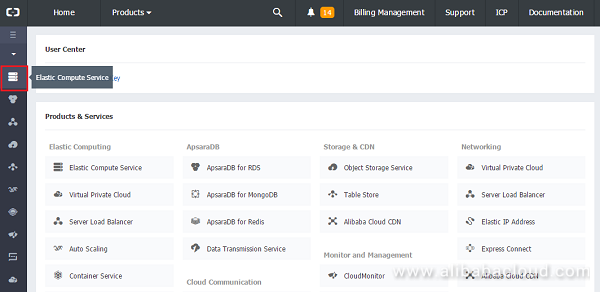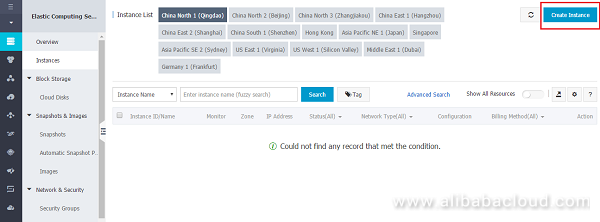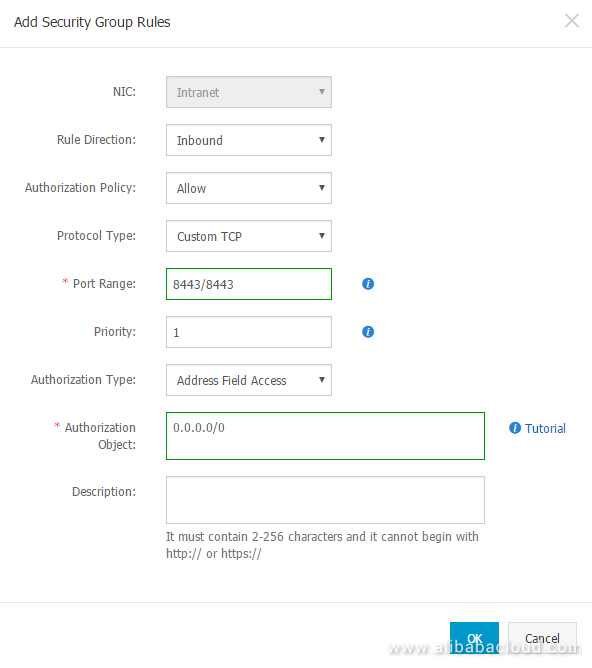By Plesk
Plesk is a web hosting control panel that lets you easily create and manage your websites on a single platform. Web professionals can now pair Plesk's WebOps and Hosting Platform with Alibaba Cloud's comprehensive suite of cloud services to build, secure and run websites, applications and online businesses of any size on an unrivaled developer environment.
Running on more than 377,000 servers, 11 million websites and 19 million mailboxes across 140 countries, Plesk offers a complete idea-to-production platform and a catalog of extensions to empower web professionals at all levels, from small digital agencies to giant web hosts. Run Plesk on Alibaba Cloud and innovate with cutting-edge tools, grow with global and scalable infrastructure, and always stay protected with rock-solid security.


When choosing the ECS instance to deploy Plesk on, pay attention to the amount of RAM it comes with. The more websites you intend to host, and the more traffic the hosted websites generate, the more RAM you will need. Refer to the Plesk System Requirements to estimate the amount of RAM your setup will require.
If you are not sure which instance to choose, we recommend starting with the ecs.n1.tiny instance and upgrading it later, if necessary. Note that only the Subscription pricing model supports instance upgrade.
plesk in the "Search in all products" field and click the magnifying glass icon.
Your instance is now up and running. To begin using Plesk, you need to perform a short post-install configuration.
By default, whenever an instance is created, only certain ports are allowed for inbound connections, while ports used by Plesk are closed. To operate Plesk and its services effectively, you need to open the following ports by adding security group rules to the desired instance.
There are two ways to do this:
Note: These instructions cannot be used to allow outbound connections on TCP port 25. To be able to send email, you need to apply for allowing outbound connections on TCP port 25. You can use security rules to allow inbound connections on TCP port 25 as described.

To log in to Plesk for the first time, you need to generate a one-time login link. Go to the generated URL to log in to Plesk and set an administrator password. You will then be able to log in to Plesk using that password.
To access Plesk for the first time:
sudo plesk login | grep -v localhost.localdomainWhen you access Plesk for the first time, you are asked to provide the following information:
By default, Alibaba Cloud generates and assigns a hostname to the instance once you have started it. However, some spam filters (including the default Plesk greylisting) treat mail sent from servers with such hostnames as spam. We recommend using your registered domain name as the server hostname.
The private IP address of the server is detected automatically. To avoid connectivity issues, do not register your instance's public (Elastic or Internet) IP address in Plesk. Only the private IP address must be registered.
We also recommend configuring the server to keep the DNS records of subdomains in separate DNS zones by running the following command:
/usr/local/psa/bin/server_pref -u -subdomain-dns-zone ownFor detailed instructions on Plesk's post-install configuration, see Post-install Configuration on a Single Server.
The following Plesk configurations are available on Alibaba Cloud Marketplace.
| Plesk | Components set |
| Plesk Onyx on Ubuntu 16 (WebHost) | Recommended set (Fail2Ban, ModSecurity, Plesk Firewall, and *WordPress Toolkit are installed by default) |
| Plesk Onyx on CentOS 7 (WebHost) | Recommended set (Fail2Ban, ModSecurity, Plesk Firewall, and *WordPress Toolkit are installed by default) |
| Plesk Onyx on CentOS 7 (BYOL) | Recommended set* (WordPress Toolkit, Security Advisor, Let's Encrypt, Git, the resctrl utility, and Docker are not installed by default but can be installed later) |
| Plesk Onyx on Ubuntu 16 (BYOL) | Recommended set* (WordPress Toolkit, Security Advisor, Let's Encrypt, Git, the resctrl utility, and Docker are not installed by default but can be installed later) |
| Plesk Onyx on Ubuntu 16.04 (Web Admin SE) | Recommended set (Fail2Ban, ModSecurity, Plesk Firewall, and *WordPress Toolkit are installed by default) |
| Plesk Onyx on Windows 2012 R2 (WebHost) | Recommended set* (ModSecurity, Plesk Firewall) |
| Plesk Onyx on Windows 2012 R2 (BYOL) | Recommended set* (ModSecurity, Plesk Firewall) |
Note: *The Recommended components set includes all components necessary for web hosting (including the web server, a mail server, a database server, and so on), plus the most popular and widely used features. For more information about Plesk BYOL, see the topic Choosing Between Plesk WebHost and BYOL. For more information about Plesk Onyx on Ubuntu 16.04 (Web Admin SE), see the topic Plesk Web Admin SE.
Note: **WordPress Toolkit in Plesk Onyx on Ubuntu 16.04 (WebAdmin SE) provides only basic functionality. To use premium WordPress features, upgrade your Plesk license to Web Pro or Web Host Edition.

21 posts | 12 followers
FollowAlibaba Clouder - February 25, 2020
Alibaba Clouder - August 22, 2018
Alibaba Clouder - June 3, 2020
Alibaba Clouder - December 3, 2018
Alibaba Clouder - August 28, 2020
Alibaba Cloud Community - February 1, 2022

21 posts | 12 followers
Follow Web Hosting Solution
Web Hosting Solution
Explore Web Hosting solutions that can power your personal website or empower your online business.
Learn More Web Hosting
Web Hosting
Explore how our Web Hosting solutions help small and medium sized companies power their websites and online businesses.
Learn More Web App Service
Web App Service
Web App Service allows you to deploy, scale, adjust, and monitor applications in an easy, efficient, secure, and flexible manner.
Learn More ICP Support Solution
ICP Support Solution
Learn how to obtain an ICP Filing or ICP Commercial License to host your website in Mainland China.
Learn MoreMore Posts by Marketplace